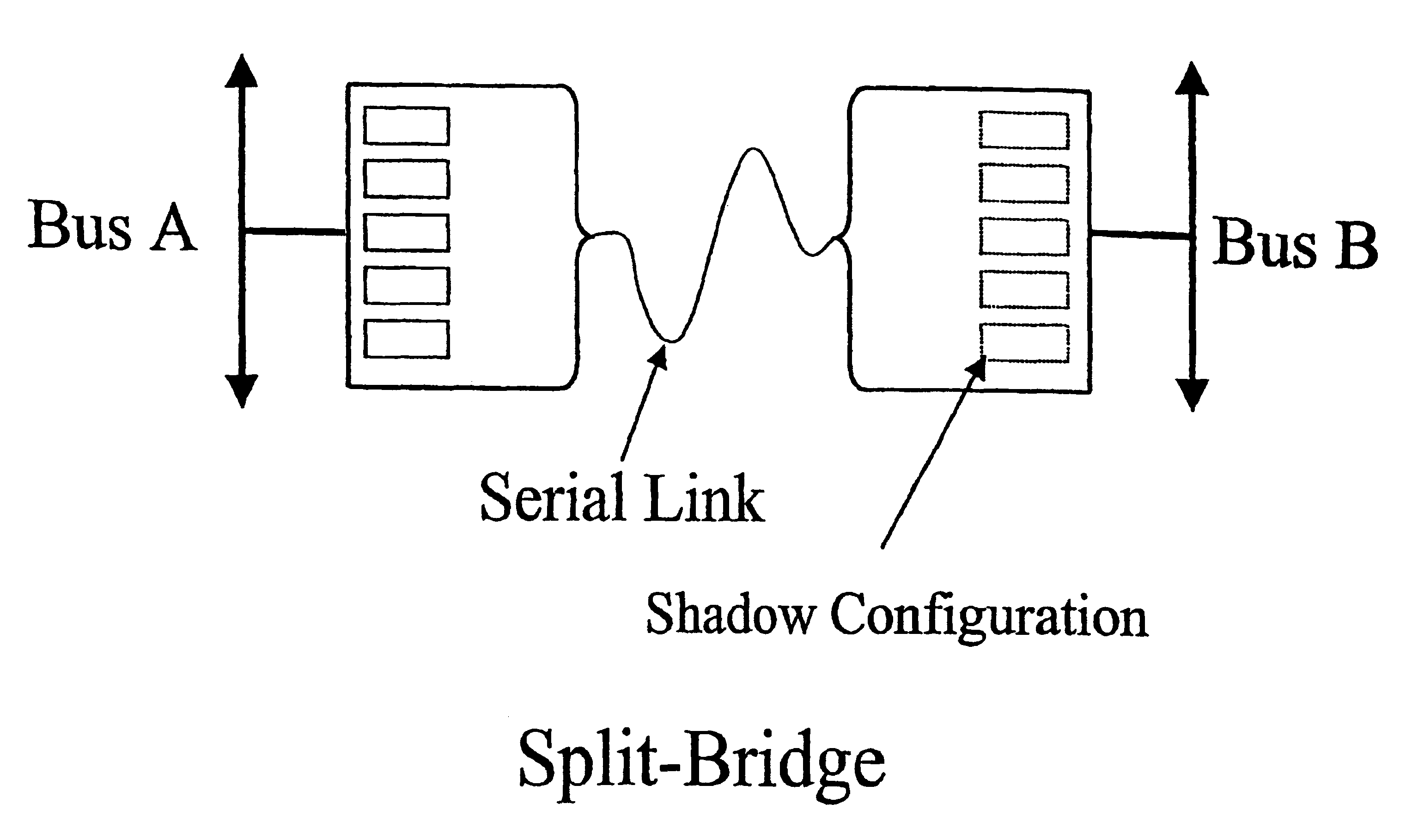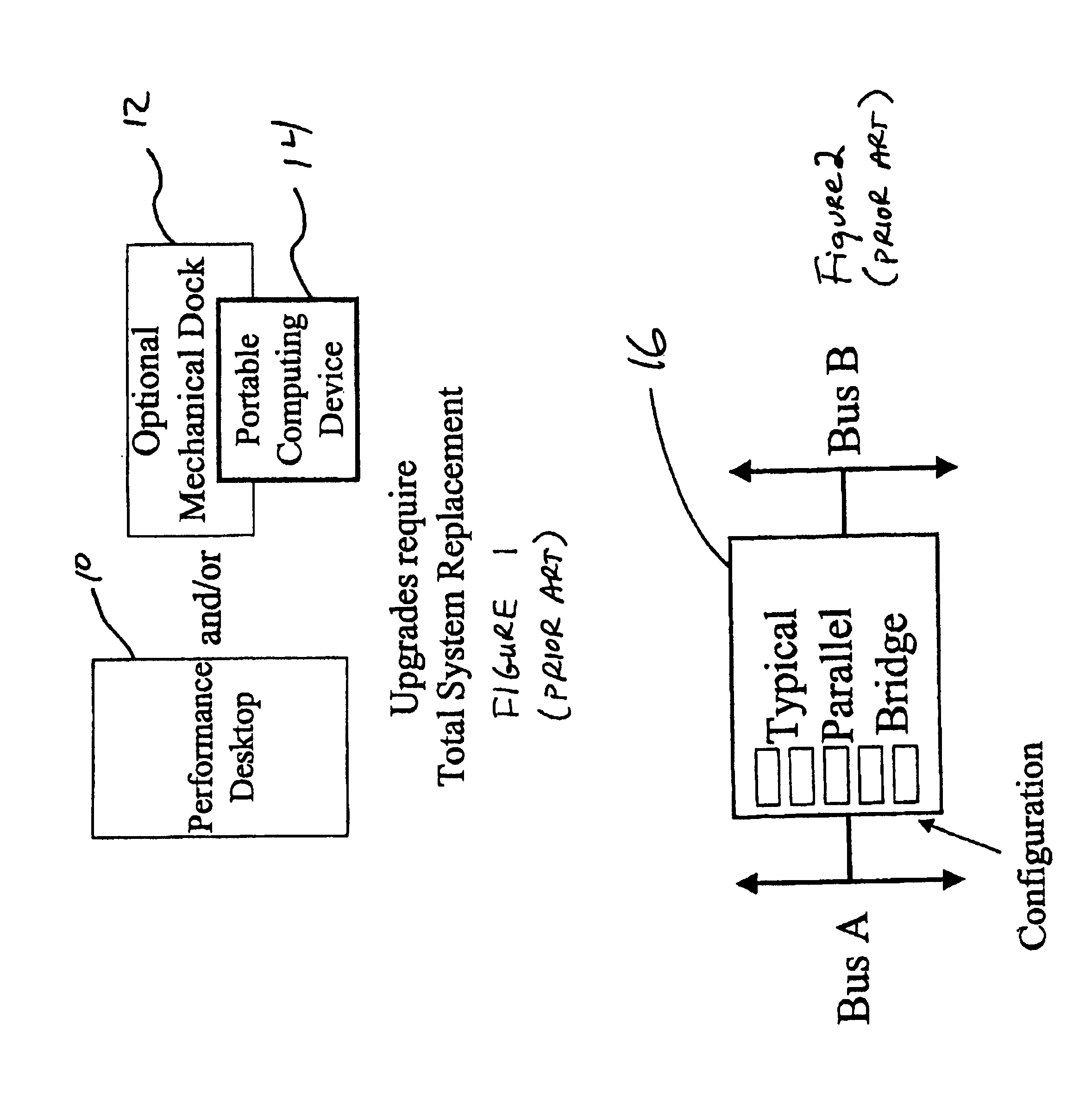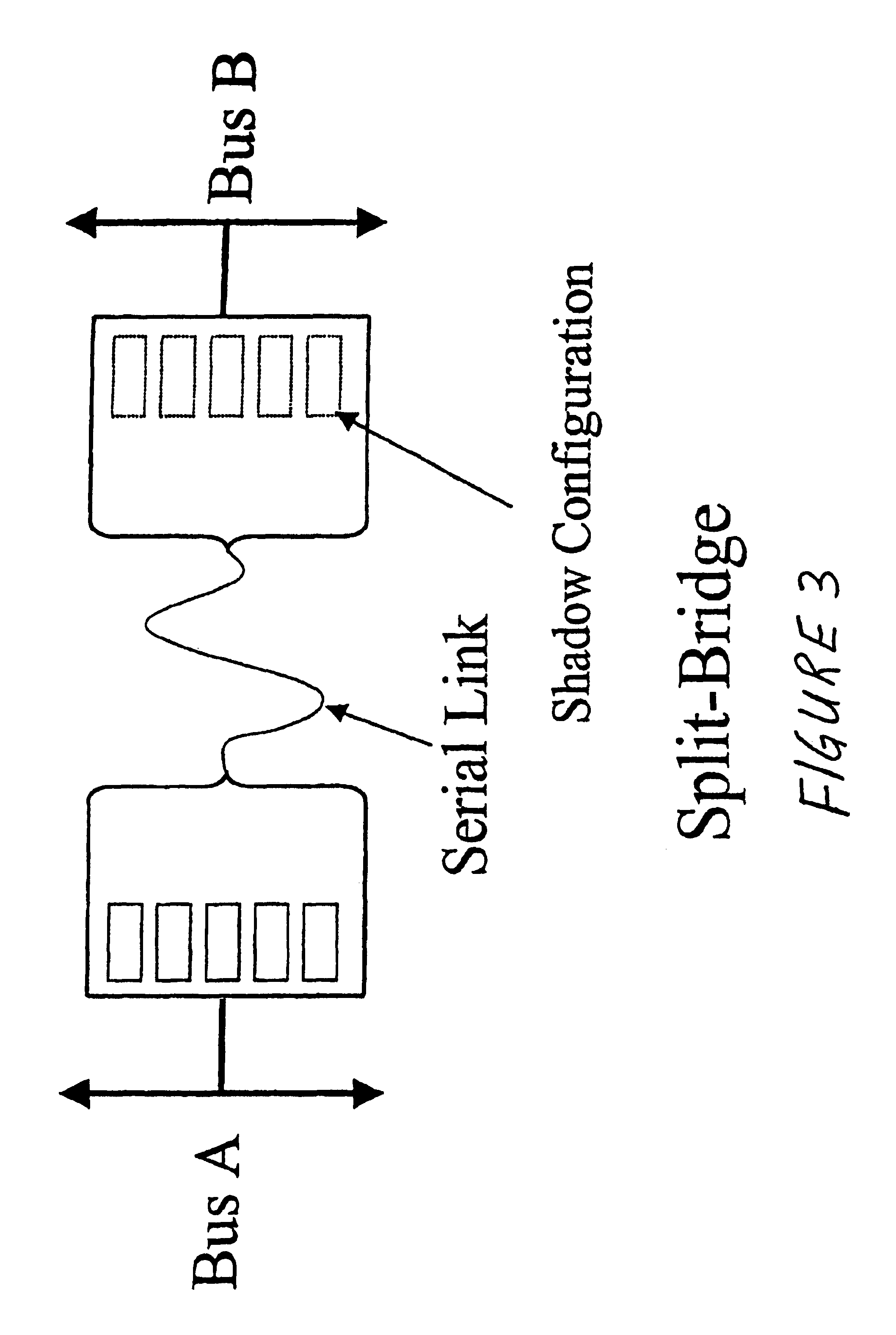Extended cardbus/PC card controller with split-bridge technology
a card bus and controller technology, applied in the field of data processing systems, can solve the problems of inability to separate the laptop computer from the docking station a significant distance, the data bus is not easily bridged to other pci based devices, and the power of the computer system today is limited in adapting to changing computing environments
- Summary
- Abstract
- Description
- Claims
- Application Information
AI Technical Summary
Benefits of technology
Problems solved by technology
Method used
Image
Examples
Embodiment Construction
[0024]Referring to FIG. 3, there is depicted the proprietary Split-Bridge™ technology serial communications technology of the present applicant, discussed in great detail in commonly assigned U.S. patent applications Ser. No. 09 / 130,057 filed Jun. 6, 1998, and Ser. No. 09 / 130,058 also filed Jun. 6, 1998 the teachings of which are incorporated herein by reference.
[0025]Applicant's Split-Bridge™ technology revolutionizes the status quo for computer systems. The Split-Bridge™ technology does not require the need for custom hardware or custom software to achieve full performance serial communication between devices, including devices having parallel data buses including the PCI bus. In fact, for each device in a modular computer system, the Split-Bridge™ technology appears just like a standard PCI bridge, and all software operating systems and device drivers already take such standard devices into consideration. By utilizing standard buses within each device operating within the modular...
PUM
 Login to view more
Login to view more Abstract
Description
Claims
Application Information
 Login to view more
Login to view more - R&D Engineer
- R&D Manager
- IP Professional
- Industry Leading Data Capabilities
- Powerful AI technology
- Patent DNA Extraction
Browse by: Latest US Patents, China's latest patents, Technical Efficacy Thesaurus, Application Domain, Technology Topic.
© 2024 PatSnap. All rights reserved.Legal|Privacy policy|Modern Slavery Act Transparency Statement|Sitemap



